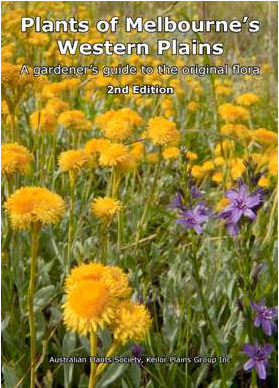Our back yard has been a weed haven since last October. Plans for veggie patches never quite happen, so finally I have decided that the garden can act as a 'lab' for my PhD. I am going to plant it out with local flora (but will not remove existing fruit trees). It will help me get to know the names, and some of the less obvious plants that might be trying to persist down at the creek.
At the moment Wattle birds are our main indigenous visitors. They love the Silver Princess (WA not local) and often hang upside down as they feed from the blossom.
Our garden is fairly locked in by cement and buildings apart from the small garden backing onto the the neighbouring cafe. They have a Snow Gum in their courtyard which is getting big, but apart from that it is pretty 'tropical' in flavour. Bouganvillea for example!
I visited
Victorian Indigenous Nurseries Co-operative yesterday in the pouring rain. They grow plants local to the north and east of Melbourne. I bought a few tube stock which we'll plant on Saturday afternoon.
Pultenaea gunii
(golden pea bush)
This one grows well under trees, wiry shrub about 50cm high.
Clusters of bright yellow and red flowers September - October.
I think this is:
Rhodanthe anthemoides
Chamomile Sunray
Perennial herb, papery white daisy flowers with yellow centre.
Grows well on sheltered escarpments in full sun.
This one looks a bit like clover:
Kennedia prostrata
(Running Postman, Scarlet Runner)
Single scarlet peas flowers scattered along stem, April to Dec.
This is a local geranium.
Often there is a local species of many of our 'western' or 'european' garden plants.
Geranium Species 1
Pascoe Vale 10/6
(Large Flowered Crane's-Bill)
Clematis microphylla
(small leaved Clematis)
The tag says it has creamy star-shaped flowers, July-Nov and that indigenous people cooked and kneaded the tap root to make dough.
We see this plant along the creek climbing trees, their seeds are fluffy, pale yellow clouds.
Brachycome Multifida
(Cut-Leaf Daisy)
Evergreen small soft shrub with fine leaves and mauve or lilac daisy flowers.
This is the biggest plant I bought, and it is prickly too. But I think that is why little birds like it, they feel safe, and they can avoid the prickles.
Grevillea Rosmarinifolia
Somerton Form
(Rosemary Grevillea)
small shrub, pinkish red flowers.
dry soil, full sun, resents poor drainage.
These lemon beauty heads have lovely flowers, sort of like extruded finger shapes... yellow.
Eutaxia diffusa
Eutaxia
This shrub likes an open position, which could be interesting in our already cramped garden...
Yellow pea flowers.
And here are some shots of the garden. I really have to get rid of the
Ancanthus mollis. It is an interesting plant, often seen decorating the tops of Corinthian columns. I find it quite beautiful, but it is very persistent and will regrow from the tiniest fragment of root. Horrible to say, but I think it will have to be a combination of Round-up and muscle..... Someone has said you have to dig it all up and then SIFT the soil to find all traces of the roots....
















































